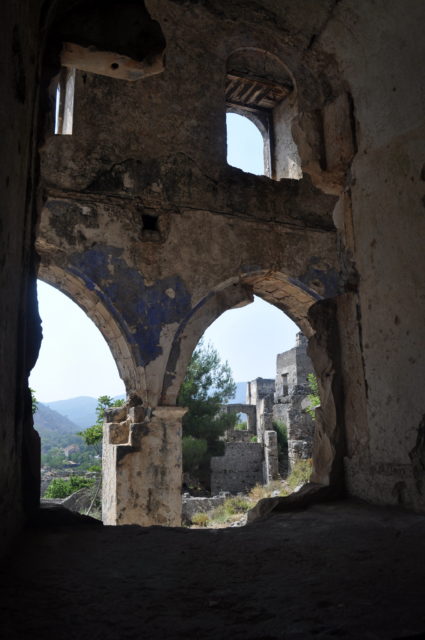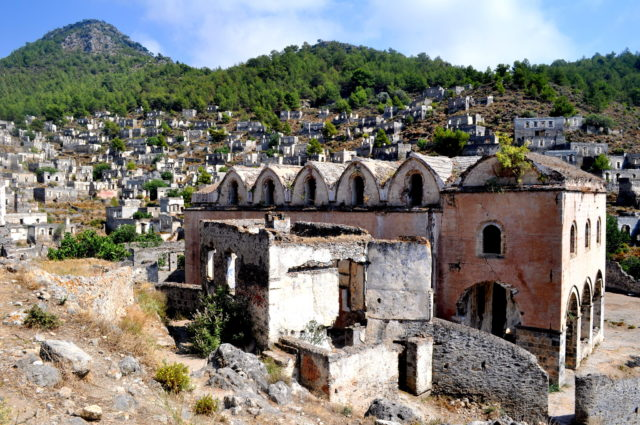Kayakoy is located eight kilometers (five miles) south of the resort town of Fethiye in southwestern Turkey. The name comes from the Greek word “Karmilassos.” Although the settlement in this location has its roots in the 14th century, it wasn’t until the 18th century that the area truly began to flourish.
At this time, Greeks from the Dodecanese Islands came to this city and decided to stay there. They called their new home “Levissi,” but the Turks, who also lived there, referred to the city as “Kayakoy.”
The nearby city of Fethiye suffered an earthquake in 1856 which destroyed city life at this time. This terrible event likely had a knock-on effect on Kayakoy, which began to thrive.
By 1900, the city had reached a peak number of residents: 10,000 people. Both those of the Muslim faith and Greek Orthodox Christians lived and worked in a harmonious community. They were connected by trade and always helped each other.
![William Neuheisel from DC, US [CC BY 2.0]](https://www.abandonedspaces.com/wp-content/uploads/sites/58/2019/10/william-neuheisel-from-dc-us-cc-by-2-02-640x427.jpg)
In 1919, the Greek-Turkish war began, and it was the final death knell for Kayakoy. At the end of the war in 1922, Greece and Turkey signed an agreement that required both countries to “exchange” members of the population to ensure that each country had one main religion.
As a result, Muslim Turks were deported from Greece, and 6,500 Greek Christians were forced to go to Greece. The city of Kayakoy became abandoned as a result.
Unfortunately, in 1957, a strong earthquake (7.1 magnitudes) occurred in the city. Most of the buildings were badly damaged.
Some Turks returned from Greece and went looking for a place to call home. They wanted to put down roots somewhere familiar to them. However, they chose not to settle in Kayakoy, since they considered this place inhospitable and severely damaged after the war. They could not see any way to return to the peaceful life that existed before the war and the population exchange.
And so, the hillside village remained in an abandoned state, and the stone houses fell into disrepair.
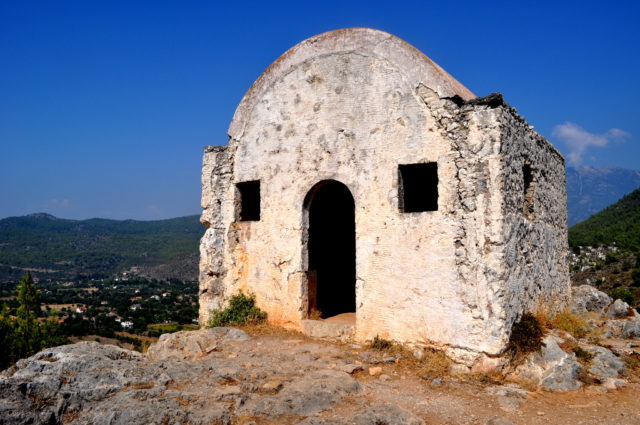
The site is now under the protection of the Turkish government. The Turkish Ministry of Culture has awarded the city museum status, and Kayakoy is also included in the list of historical monuments.
UNESCO accepted this abandoned city as a World Friendship and Peace Village. National Geographic also recognized it as one of the ten best ghost towns in the world.
Currently, the ghost town is a favorite place among tourists. Several residents from nearby locations trade in the city, selling food and souvenirs. There are still 500 houses standing, although they are mostly in a ruined state, and two Greek Orthodox churches.
Also in the center of the city, you can find a fountain that dates to the 18th century.
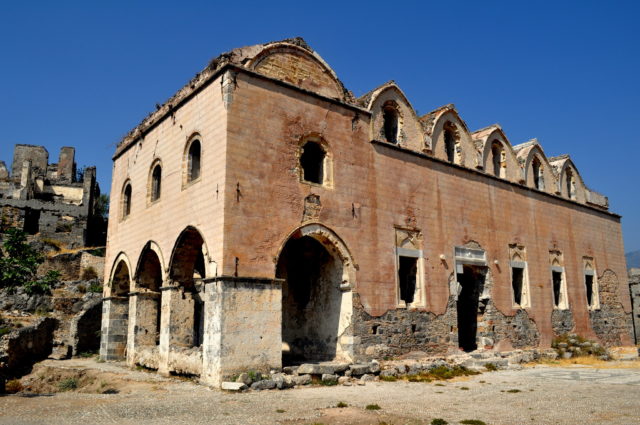
In 2014, the Turkish Travel Agencies Association, the Turkish-Greek Friendship Association, and the Turkish Chamber of Architects developed a project to rebuild Kayakoy. Former residential buildings, schools, libraries, shops, and other facilities are part of this project.
It is intended that the ruined city should become a symbol of the peace and friendship that once existed between Turkey and Greece. Today, the most important factor in the city’s economy is tourism.
Visitors might be interested to know that the city can be reached by plane, the nearest airport being Dalaman Airport, 60 kilometers (37 miles) north-west. Nearby cities offer a selection of regular tours to this ghost town, and from the resort town of Fethiye, you can get to Kayakoy by bus in ten minutes.
All relevant details can be found on the official website for Kayakoy.
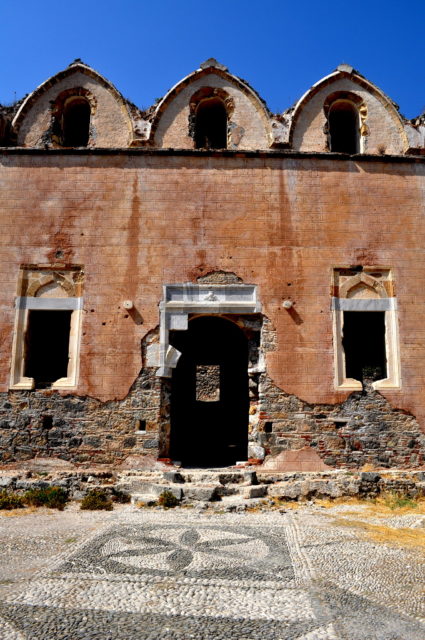
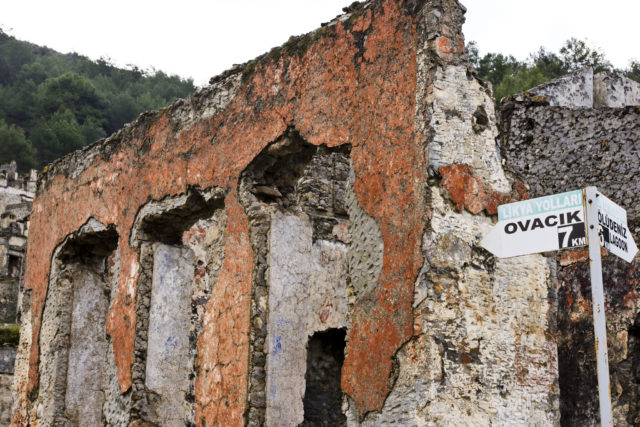
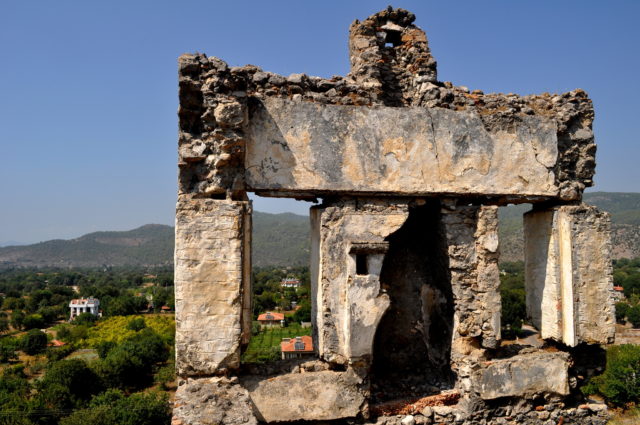
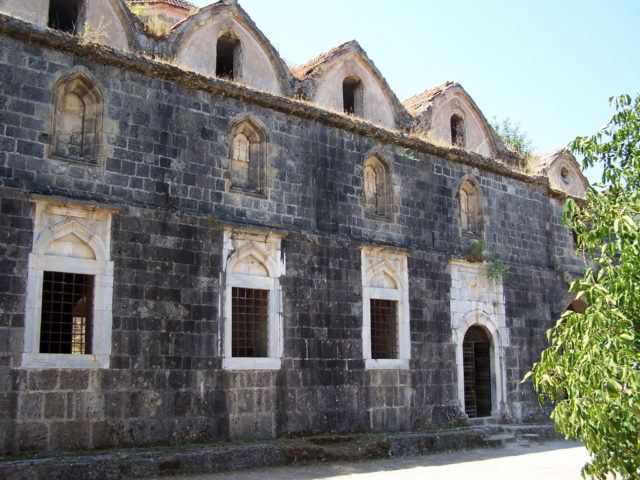
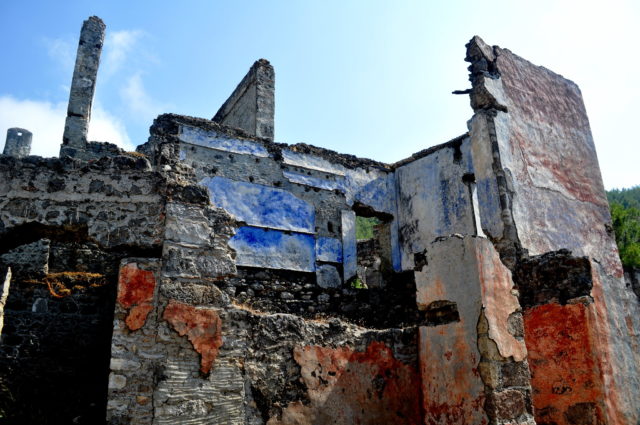
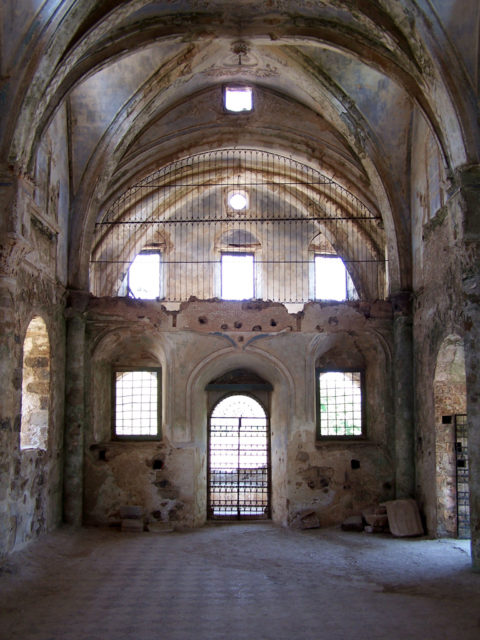
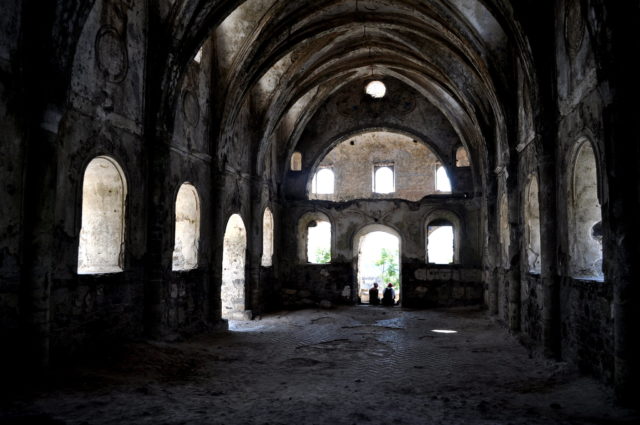
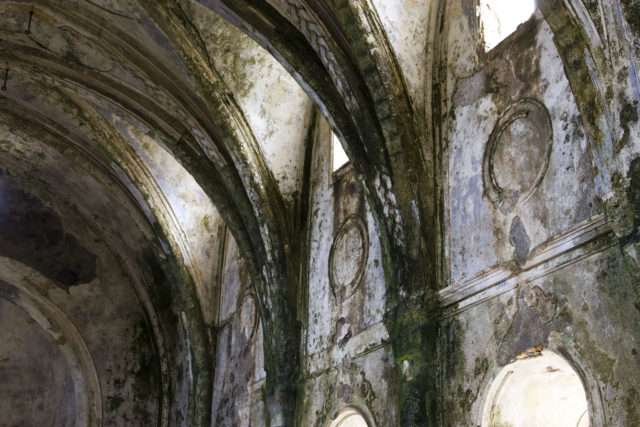
![Kayakoy winery. Author: Krzysztof Gabrylews – CC BY 3.0]](https://www.abandonedspaces.com/wp-content/uploads/sites/58/2019/10/kayakoy_winery_-_panoramio-krzysztof-gabrylewsk-cc-by-3-0-427x640.jpg)
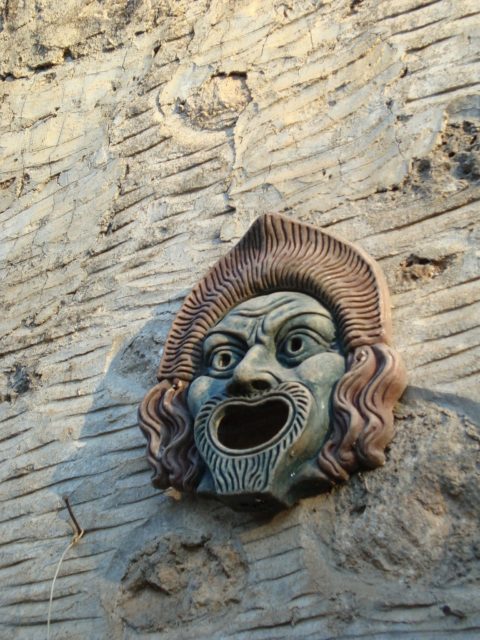
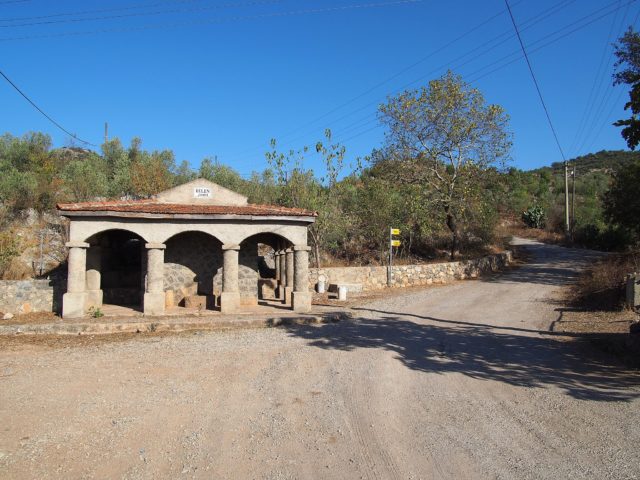
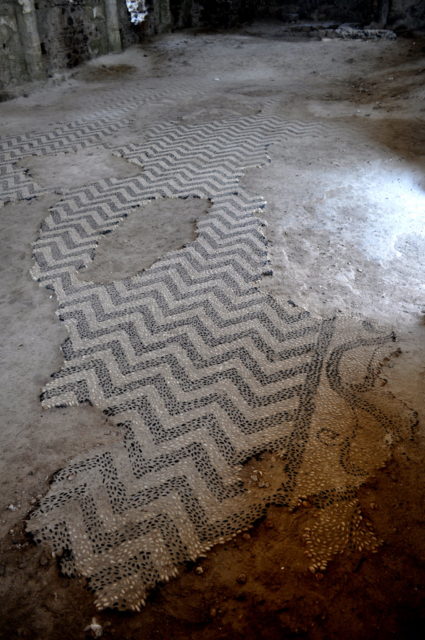
Another Article From Us: Abandoned Train in Belgium – the Grand Orient Express
